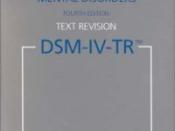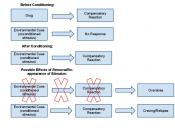Abstract
The purpose of this essay was to review the symptoms, theories and treatments for separation anxiety disorder (SAD). Here the symptoms that have been described are of a behavioural and cognitive nature. The theories that have been discussed relate to these symptoms as they are learning/behaviour based theories as well as cognitive based theories. In direct relation to these symptoms and theories of SAD the most appropriate treatment - cognitive behavioural therapy (CBT), has also been reviewed, divided into its cognitive and behavioural components. It was concluded that symptom type and theories of etiology are fundamental in providing the best treatment to people with SAD.
�
Separation Anxiety Disorder - A revision of Cognitive and Behavioural: Symptoms, Theories and Treatments
Separation anxiety disorder (SAD) is characterised by intense fear, distress and anxiety when separation or anticipated separation occurs with a major attachment figure (usually the parent/s, but can occur with siblings or even the home).
The prevalence of SAD is stated by the DSM-IV-TR (American Psychiatric Association, 2000) to be about 4% in children and adolescents, with a marked decrease in frequency as the child grows through adolescence. SAD however has also been found to produce a vulnerability to other psychotic disorders in adulthood such as panic disorder, schizophrenia or generalised anxiety disorder (Slattery, 2002). Outlined in the DSM-IV-TR (American Psychiatric Association, 2000) is the criteria for the diagnosis of SAD which indicates that at least three of the eight symptoms listed, based on detrimental: behavioural, cognitive and somatic symptoms, must be present for at least four weeks in a patient under the age of 18 (under 6 years considered early onset) for a diagnosis of SAD. There are various theories to explain the cognitive and behavioural symptoms of SAD including learning/behavioural theory as well...


